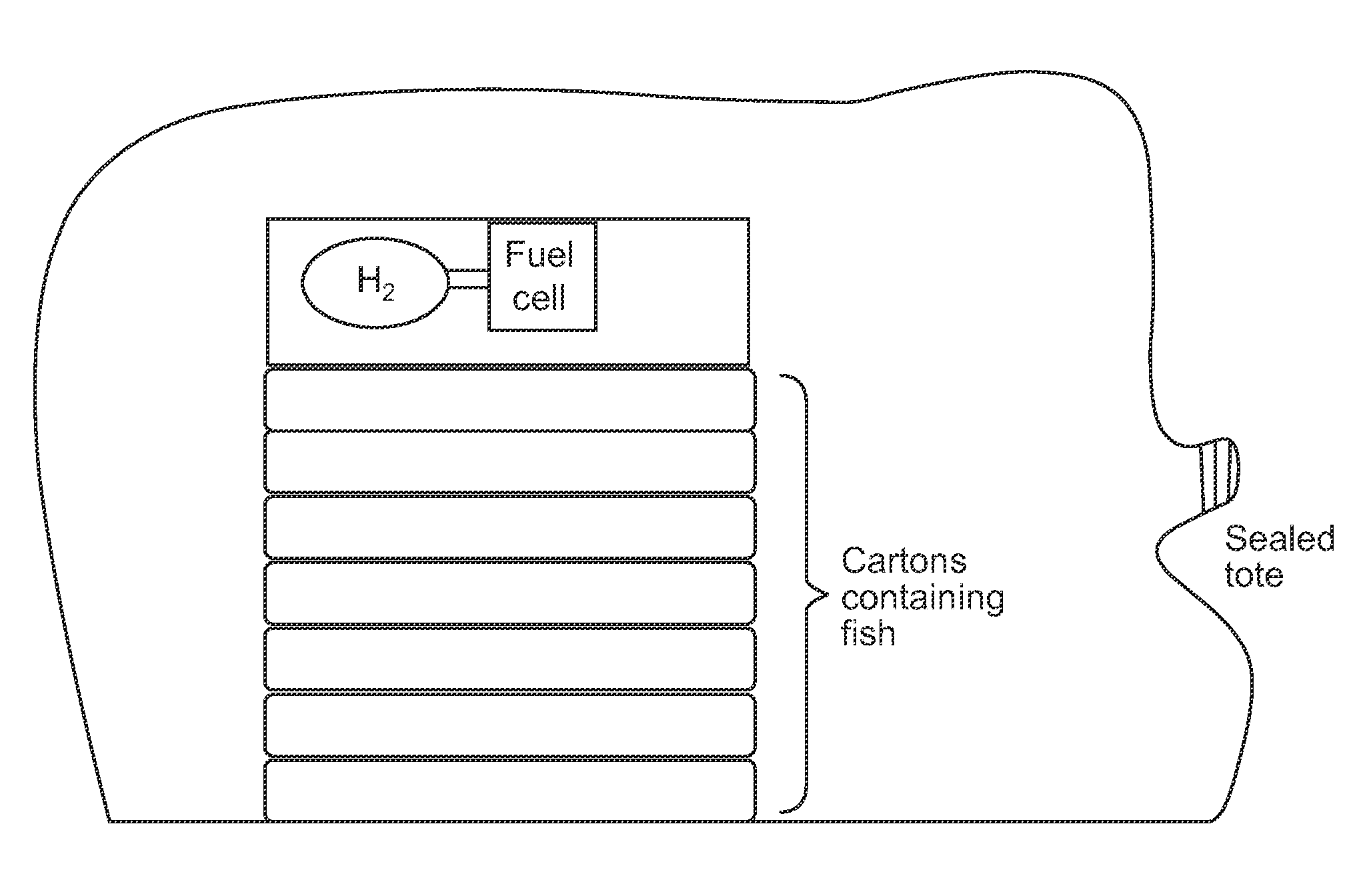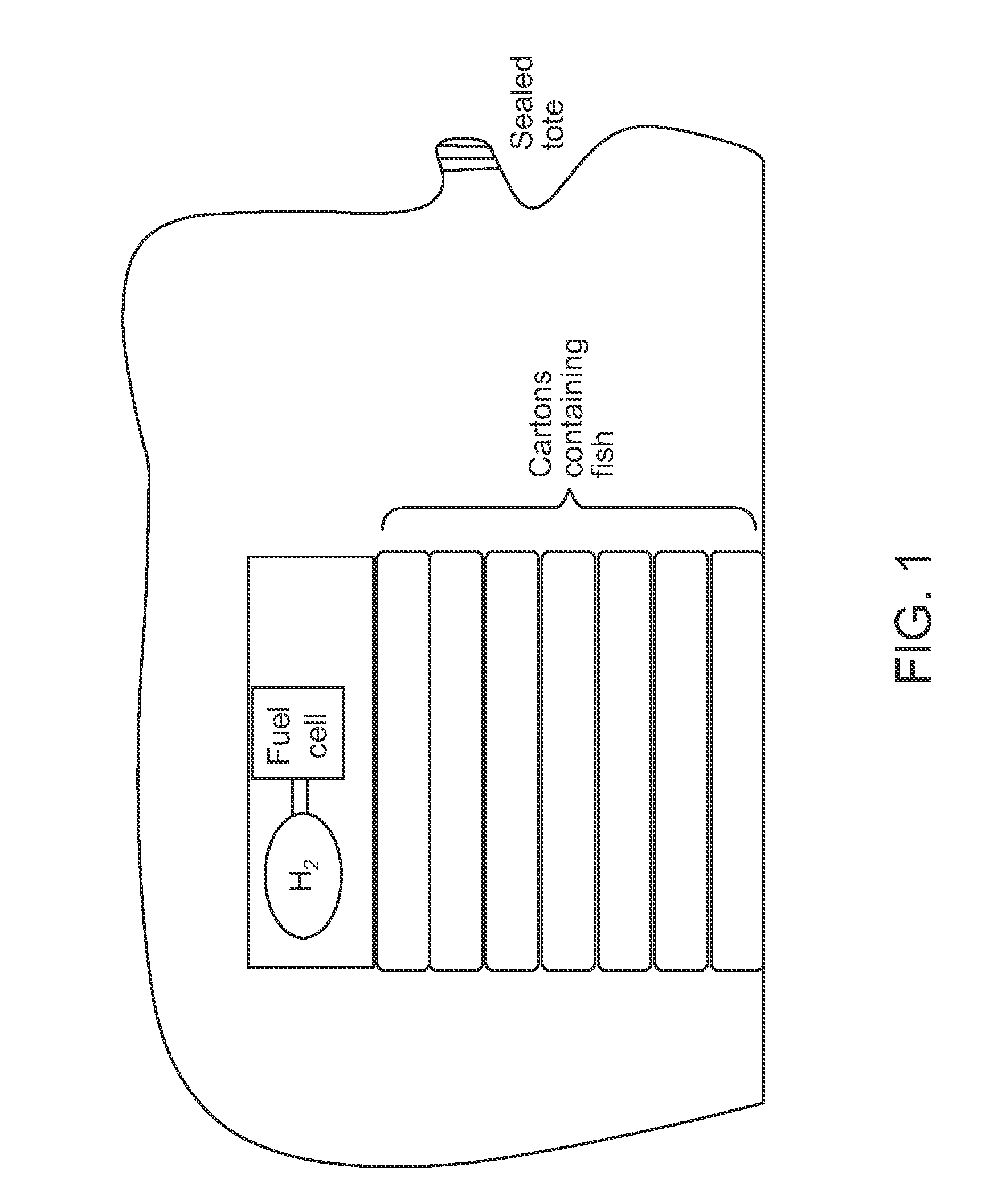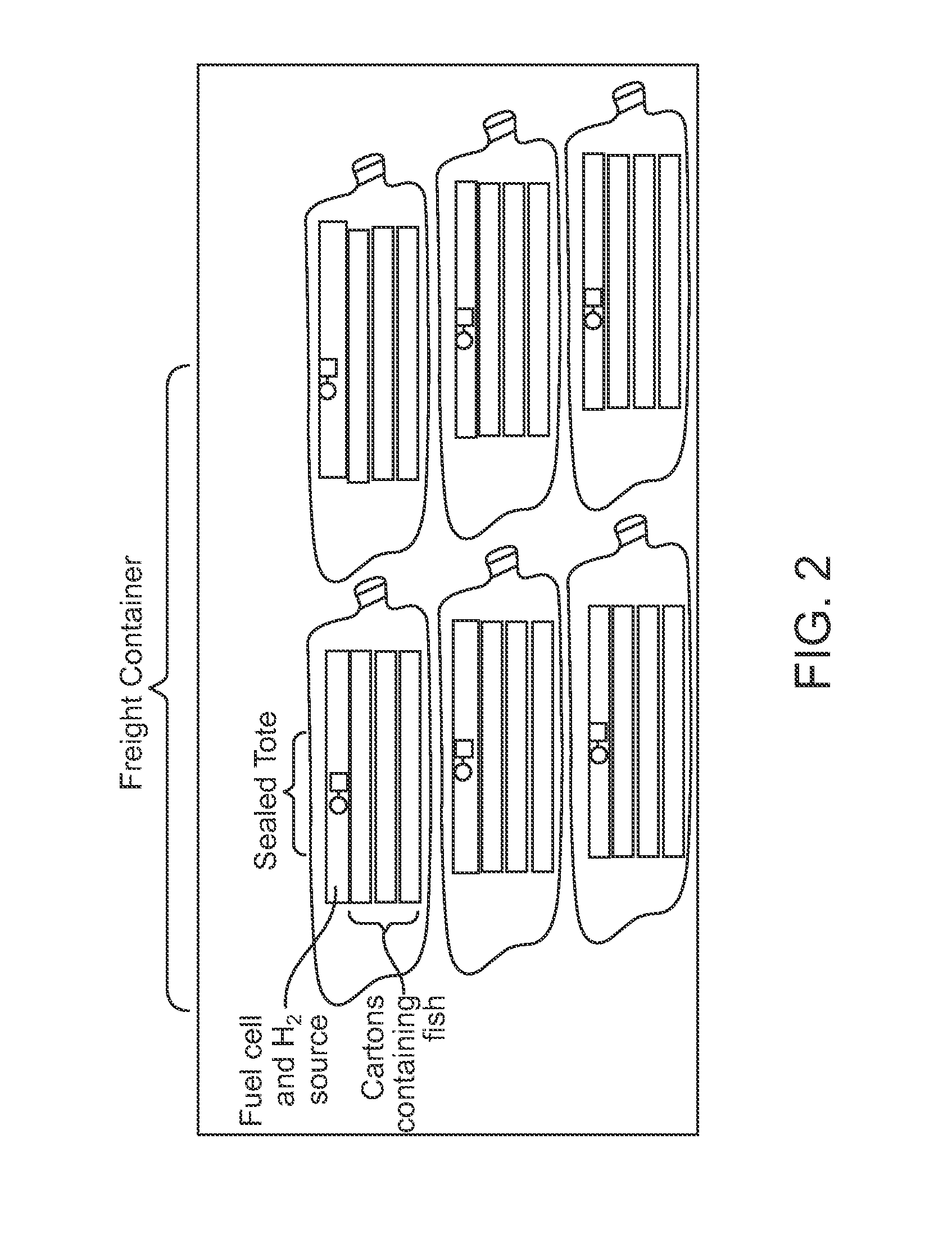Systems and methods for maintaining perishable foods
a technology of perishable foods and systems, applied in the field of systems and methods for maintaining perishable foods, can solve the problems of little or no head space remaining, damage to products, and detrimental vacuum situation, and achieve the effect of facilitating economic practi
- Summary
- Abstract
- Description
- Claims
- Application Information
AI Technical Summary
Benefits of technology
Problems solved by technology
Method used
Image
Examples
example 1
[0136]Two bench top rigid containers were constructed, one with and one without a fuel cell. Two nine-liter plastic food storage containers with sealable lids were modified so that gases could be flushed and continuously introduced (at very low pressure) into each container. A commercially available fuel cell (hydro-Genius™ Dismantable Fuel Cell Extension Kit, purchased through The Fuel Cell Store) was installed into the lid of one nine liter rigid container such that hydrogen could also be introduced from the outside of the rigid container directly into the (dead ended) anode side of the fuel cell. The cathode side of the fuel cell was fitted with a convection flow plate allowing for container gases to freely access the fuel cell cathode. Sodium borohydride was purchased from the Fuel Cell Store as a chemical source of hydrogen gas (when mixed with water). A sodium borohydride (NaBH4) reactor was constructed from two plastic bottles such that hydrostatic pressure could be applied f...
example 2
[0146]FIG. 7 shows flexible totes (as disclosed hereinabove) shortly after gas flushing with carbon dioxide having an initial headspace of about 30 volume percent. Each of the totes are approximately 42″×50″×130″ and contain approximately 2,000 to 2,200 pounds of fish contained in 54 individual cartons. Other sizes of totes can also be used, for example, totes having the size of 50″×42″×130″ or 48″×46″×100″. The totes were initially flushed with nitrogen (via valves & plumbing). After about 8 or more hours, the totes were flushed with carbon dioxide to achieve a very low oxygen level before turning on the fuel cell. It is contemplated that the nitrogen flush can be replaced using only a single CO2 flushing episode and a fuel cell. Holes were cut (in-flow and out-flow) (or plumbing can be used) to initially flush the CO2 into the tote to arrive at greater than 90% CO2. In addition, a nitrogen flush can be employed to reduce the oxygen level to about 1% oxygen after which the valves a...
example 3
[0150]Reference is made to FIG. 10, wherein tote 1 comprises a flexible oxygen impermeable barrier layer 3, inlet port 5 and outlet port 7, wherein the inlet port 5 is connected to a low oxygen gas source 9. Tote 1 contains foodstuff (e.g. fish) 11 and head space 13. Headspace 13 provides for a significant oversizing of the tote relative to the foodstuff 11 contained therein. In one embodiment, the oversizing provides for a head space of up to 40% volume percent of the tote.
[0151]This unique architecture disclosed herein includes major over-sizing of the tote 1 and head space 13 (see FIG. 12), in-flow (inlet) and vent (outlet) openings and gas flushing (as opposed to vacuum, followed by gas injection). Also, the tote is loaded by placing oxidatively degradable foodstuffs inside the tote with the tote positioned on a pallet with the factory sealed end (closed end) on the bottom (as opposed to having the factory seal is the top as the tote is placed over the top of the foodstuffs). Th...
PUM
 Login to View More
Login to View More Abstract
Description
Claims
Application Information
 Login to View More
Login to View More - R&D
- Intellectual Property
- Life Sciences
- Materials
- Tech Scout
- Unparalleled Data Quality
- Higher Quality Content
- 60% Fewer Hallucinations
Browse by: Latest US Patents, China's latest patents, Technical Efficacy Thesaurus, Application Domain, Technology Topic, Popular Technical Reports.
© 2025 PatSnap. All rights reserved.Legal|Privacy policy|Modern Slavery Act Transparency Statement|Sitemap|About US| Contact US: help@patsnap.com



